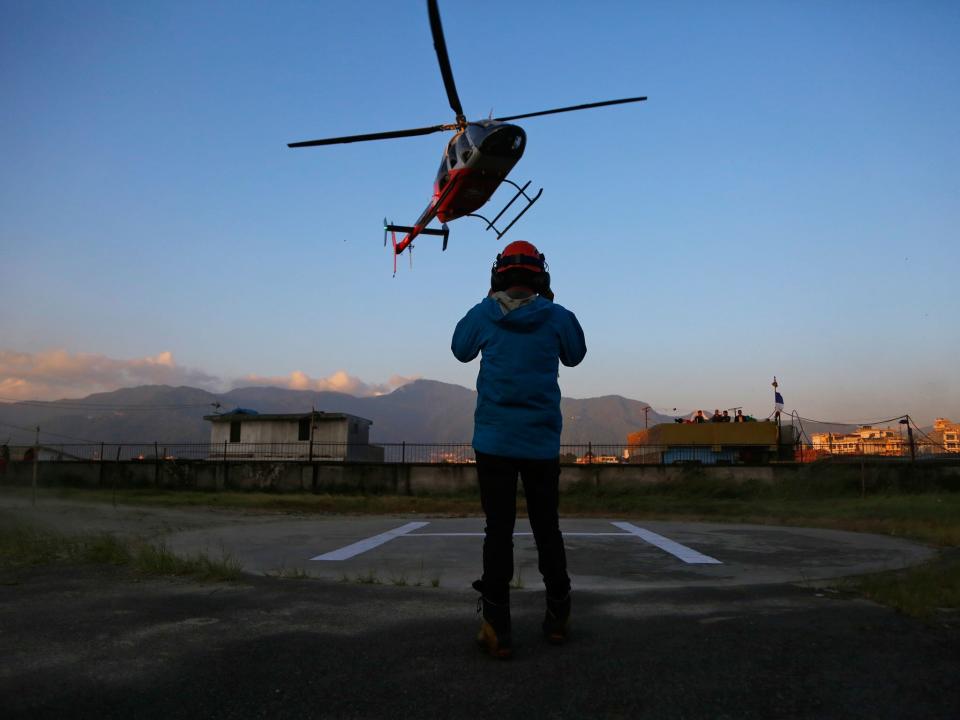Famous climber among nine killed by deadly storm in Himalayas

Rescuers have finally recovered the bodies of nine mountaineers – including a world-famous climber from South Korea - who were killed as they planned the ascent of a peak in Nepal.
The effort to find the nine was hampered by difficult and remote terrain, and it took two days before the bodies were found.
The group, who were killed by a storm sweeping through their camp at the base of Gurja Himal, included five South Koreans and their four Nepalese guides.
One of the Koreans was Kim Chang-ho, the first South Korean to summit all 14 Himalayan peaks over 8,000m without using oxygen, who was leading the expedition to map a new route to the peak that has not been scaled in eight years.
Local police chief Bir Bahadur Budamagar said a group of villagers reached the climbers’ camp site on Saturday on Gurja Himal, a less-popular but pristine mountain in the shadow of Dhaulagiri, the world’s seventh-highest peak and a day’s walk from the nearest village.
Wangchu Sherpa, of the Trekking Camp Nepal agency in Kathmandu, which equipped and organised the expedition, said since achieving the feat in 2013, Kim had been concentrating on climbing routes that had not been tried before.
Nepal offers hundreds of mountains to climb, and mountaineers generally choose those where routes and conditions are well known.
Only 30 climbers have ever reached the peak of the 7,193m (23,590ft) Gurja Himal, government tourism director Surendra Thapa said, and Kim was not among them.
Many climbers are discouraged from the mountain because of a legal requirement to have at least three trained Nepalese guides accompany them in order to qualify for a permit, Mr Thapa said.
“These people like to go to mountains which are not crowded and there are no commercially organised expeditions of big groups. On the bad side, they are also far from getting help when in trouble,” said said Jiban Ghimire, who organises expeditions for the Kathmandu-based company Shangrila Nepal Trek.
The damage to the climbers’ bodies, including broken limbs and smashed skulls, indicated a violent wind carrying chunks of ice swept them away from their campsite, Mr Budamagar said. The bodies were found spread in a 1.5km radius.
“The battered pieces and tents and other equipment were scattered even further away,” Mr Budamagar added.
Word of the destruction got out Saturday morning, and helicopters were sent. They were not able to land due to the continuing bad weather but spotted the bodies.
The bodies of Kim and four other South Korean victims will be repatriated on Wednesday, according to an official from South Korea’s Corean Alpine Club.
The body of one of the guides was taken to his village, while the eight others were flown to Kathmandu.
“It was the worst mountaineering disaster in Nepal in recent years and an unimaginable one,” said Rameshwor Niraula of Nepal’s Mountaineering Department, which issues climbing permits and monitors expeditions.
He said officials were still gathering details of what exactly happened, but from what rescuers described, the climbers were blown over by a blast of wind.
The Corean Alpine Club official, who didn’t want to be identified because she was not authorised to speak to reporters, identified the other South Korean victims as Yu Yeong-jik, Im Il-jin, Jeong Jun-mo and Lee Jae-hoon.
It was the deadliest climbing disaster in Nepal since 2015, when 19 people were killed at Mount Everest base camp by an avalanche triggered by an earthquake that devastated the country. The previous year, an avalanche above Everest’s base camp killed 16 Nepalese Sherpa guides.
The Himalayan range includes all 14 of the world’s peaks that rise above 8,000m, and only a few dozen climbers have made verified, successful ascents of them all. Kim achieved his feat in 2013.
Agencies contributed to this report

 Yahoo News
Yahoo News 